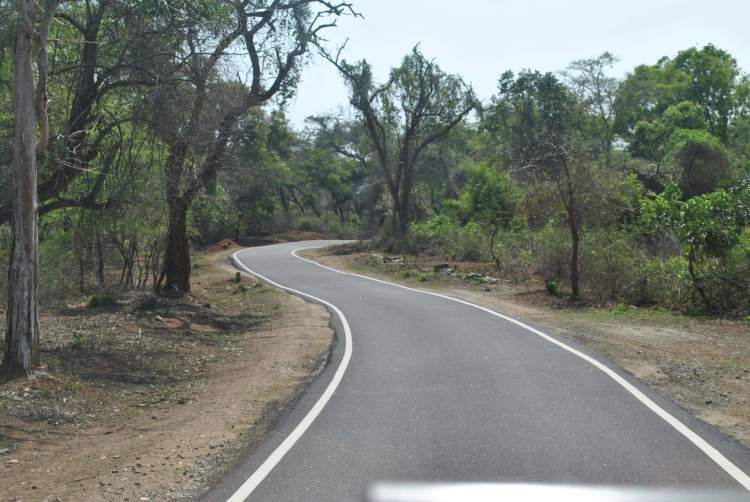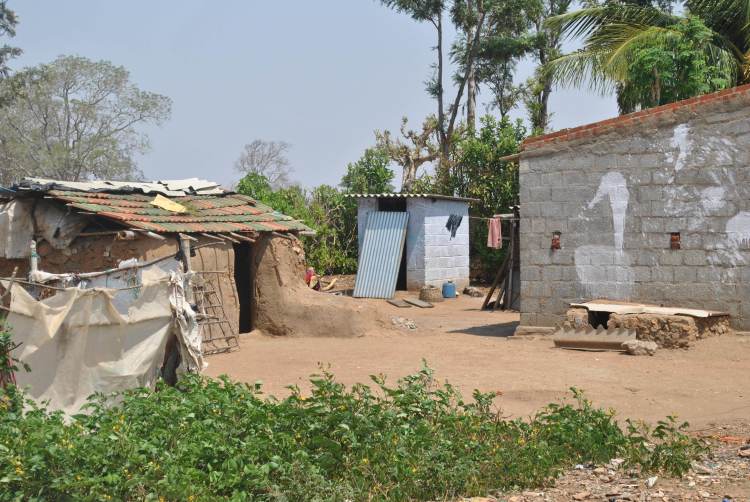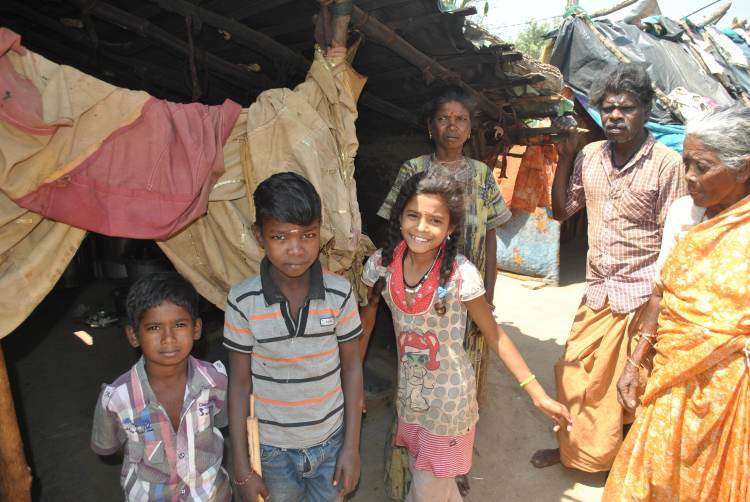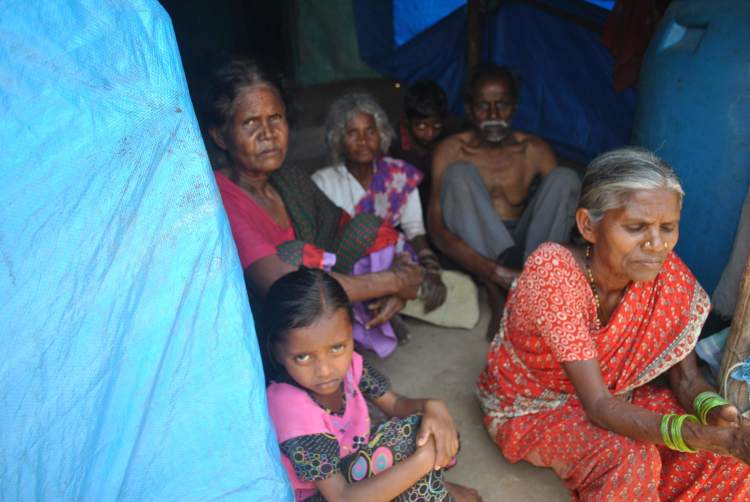'Serendipity' is one word to describe my experience:I stumbled upon the Irula tribes when I was on the lookout for something completely different.This event gave me a completely new perspective of life and an excellent story to write about- Positive living.
How it all began

Right in the middle of the reserve forest, was when I found some animals at last. A lad taking his herd out for grazing. Surprised to find a human out of nowhere inside the forest, I looked outside and a sign board said ‘Mayanur-Irula tribe settlement. I asked my driver to take me inside and agreed to pay him extra for the ride back. He kept assuring me that we would definitely find an elephant herd if we headed back, but I had decided to call it a day. I insisted on visiting the tribal settlement.“It isn’t your lucky day, sir,” said my driver. I was desperately peeping from my jeep window, looking for wildlife. I just learned that being on a holiday in the 'forest' and not spotting a single animal can be quite upsetting. Fanning the upset was the hot breeze in the Masinagudi forests - which was touted as a place of refuge from the heat.

The dry forest where there was no sign of wild animals - the view from my jeep
 The young lad with his goats
The young lad with his goatsThe Mystic Maayanur
Maayanur was not a typical Tamil Nadu hamlet. It could be a village in Rajasthan - totally parched. We saw an old man gazing out into the open lands once we entered the Tribe. I got down from the jeep and began walking towards him. The boy who was with the goats looked at me and said the old man’s name is Shivayya and he was the Irula head priest. He was the one who told me more about the Irula tribes and their origin.

Shivayya - The head priest of Maayanur.
Irula Tribes - the men of night’s watch
The Irulas, Shivayya said, are the first native tribes of Tamil Nadu. “The name ‘Irulas’ originates from the word ‘Irul’, meaning ‘night’ in Tamil. The Irula men were originally part of the Kings Guard they were the ones who kept watch at night.” Cue to the catchy Game of Thrones theme music playing in my head. What followed justified this jump my mind made to GoT.
Shivayya pointed to a pillar and said, "It was the first pillar our ancestors erected here two thousand years back and every time an Irula was ready to be sworn into the Kings army as a night guard it was here he took the oath. For thousands of years, Irulas served for the Chola dynasty as night guards.”

The sacred pillar of Irulas
“Since we were always the men of Kings Guard, we are built to withstand hard times and have been taught not to complain about hardships,” Shivayya said and he began taking me around the Irula settlement. This was the point where I realized that what was intended to be a holiday had brought me to a place with an amazing story about how the Irula tribes are standing examples of grit and positivity.
Historical significance of Irulas
As we began walking, I asked Shivvaya more about the history of the Irula settlement.The Irulas settlement in Maayanur is about two thousand years old."The Irulas walked across the Bandhipur sanctuary and set up a camp at this place since there was a river running by at this place."They found this place so secure that the camp became a permanent settlement.
They began by serving as Kings guard and moved on to specializing in catching venomous snakes and rodents.We specialize in cobra antivenin, where we milk a cobra to produce an antidote for snake bite.Irulas began moving to cities in Kerala, TamilNadu, and Karnataka once there was a requirement of snake bite cure", Shivayya said.
To me, it was evident that these professions built the positive attitude and the grit to remain calm and stable even during times of crises.
Into the lives of the Irula
We walked around the Irula houses and I observed that the Irulas spoke a language which was a mixture of Tamil and Kannada. When I asked Shivayya about this, he said, “Our language is a boon and a bane for us” and broke off chuckling. He continued saying, "The Tamil Nadu government feels that we belong to Karnataka and the Karnataka government thinks the other way round. Hence, we often have to fight for the state government schemes for the tribes, but other times, we get lucky and get allowances from both the states.”

The mud homes of Irulas.
A typical Irula house looks like the kind of house I would make if I absolutely had to. It is made entirely of stones and mud. Most houses don't have doors so the homes look welcoming to guests. The households have hunting dogs as pets and a separate house for their goat and sheep.

The wooden houses which protect the cattle
“The Irula tribes trust the hunting dogs to protect them and their cattle. There are instances where the dogs have scared even elephants away!" Shivayya said when we were inside one of the cattle houses.

The Irula colony
There are about 50 families in this settlement and I was surprised to find that almost every household had a DTH connection and a television, despite being devoid of basic facilities like proper sanitation. When I asked Shivayya about this he chuckled and said "Yes, government constructed toilets for a few houses here,” and pointed to one of them.
 The lone toilet
The lone toiletThe toilet was very small and just had an asbestos sheet to function as a door. Shivayya asked me “Do think it is possible for anyone to use this?” I was silent.
He continued saying “We relieve ourselves in the open and refuse when officials come and ask for more toilets to be constructed. It is our culture and we don't complain because complainingt is against our culture”.
Changing with times
“Irulas shifted to agriculture as times went by and were allocated lands by kings. For many years, we remained farmers. The land around us are all Irula lands and we cultivated millets here. This was the only place in Tamil Nadu which had millet cultivation for many years. Now, since we have so less water, without complaining, we have shifted to animal husbandry”. He then smiled and took me around to one of the Irula households.
 The Irula children
The Irula childrenHere, I met Irula children. Twelve-year-old Tipu and the 8-year-old Megha told me about school and their aspirations of becoming an engine driver and an actress respectively. Their parents pointed to another child and told me he couldn't speak but was excellent in mathematics. An engineer the electricity board drives the children to a local school at Masinagudi and brings them back home every day.
Their parents appeared to be tea-estate workers and they invited me home for lunch. The kids pulled me inside and all of us sat down for lunch. A huge ragi ball with pickle is their lunch everyday. I amused the kids with my attempts to swallowing the ragi. The drinking water was too salty, but people here neither complained nor cautioned me from drinking it.
The Irula culture
Our lunch conversation in the house was about the Irula culture.Irula's refrain from eating rice and consume millets,unlike the common habit in South India.This is because the millet-based food was ideal for the climate and was the best fit for their rigorous lifestyle. Irulas, I was told celebrate Shivaratri.
" On the Shivaratri day,we make it a point that Irulas from all over the world gather here.We chant bhajans and prayers of lord Shiva our chief deity throughout the night." Shivvaya said and invited me to come over on Shivaratri to click pictures."It will be amazing!",he said.
The oldest Irula lady - a woman of wisdom
Shivvaya then asked me “You want to meet someone interesting?”
We went to another thatched roof home and saw an old woman chatting with her friends. When she saw me trying to take photos of her she said, “I hate reporters and tourists. They all are temporary people and just leave after hearing us out.”
She gave me a stern look and asked, “What are you going ask me? How old am I? What sufferings I and my tribe face? And write a sympathetic sad story about us? We all are very happy people, the forest gives us resources and strangers take the resources away from us. Yet, we all are happy. We are all happy,” she said again and paused took a sip of water.

The oldest Irula lady
“If you take a picture of us, don’t post it in grayscale and write a story that we lead sad lives. Write a colorful story with bright pictures of us,” she said. She kept her face stern the whole time I was taking the photos. Finally, she turned to Shivayya and ordered him to make sure I sent them a copy of what I wrote.
Shivayya laughed at this. The old lady looked at me again and said, "No sad stories about us, ok?" Dare I disobey?
Mixed feelings and a positive rub off
It seemed like Shivayya’s way of saying goodbye to me - bringing me to the old lady. I had taken enough of his time and tested his patience with my torrent of questions. I thanked him and waved bye to the children as they chased my jeep once we started moving away. I was heading back home and felt a bit numbed.
I came out to see wildlife and I found humanity in the forests of Masinagudi instead. I had met a people who made a virtue out of positivity and not protesting against injustices of life. It might have been an uneventful trip but for visiting this settlement. The Irulas gave me a story and insisted that they be portrayed as happy.
On the way back, the driver once again commiserated, "It isn’t your lucky day, sir.”
I told him “It is my luckiest day in my life.”
At least for that one day, the positive attitude of the Irula tribes had rubbed off on me too. The writer in me was saying that I would never be on a holiday but would always look for interesting stories to write about.








